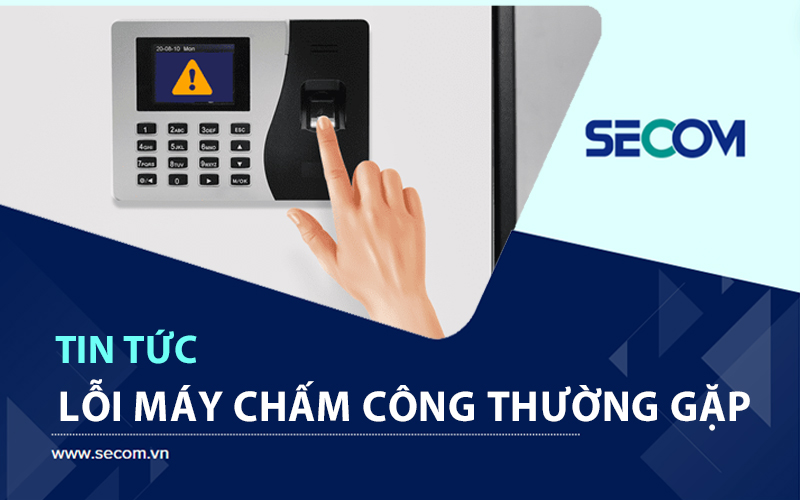- SECOM News
- May. 28, 2024
What is CCTV? What Does a CCTV System Include and What Are Its Roles?
CCTV is a closed-circuit surveillance camera system that plays a crucial role in ensuring security, assisting in management, and monitoring activities in the surveillance area. Nowadays, this system is increasingly popular and widely applied in various aspects of life, from homes, offices, and businesses to public areas, transportation, and more. So, what is CCTV? What devices are included in a CCTV system, and what benefits does it bring to users? Let’s explore the details with SECOM Vietnam through this article!
What is CCTV?
“What is CCTV?” is a common question SECOM receives from customers when consulting on CCTV system installation. CCTV, or surveillance camera, is a closed-circuit video system used to monitor security at locations such as homes, offices, businesses, public areas, etc. This system operates on the principle of recording and transmitting images and sounds directly from the camera to the recorder and displaying them on a monitoring screen. This allows users to easily and intuitively observe all activities in the camera-installed area.
In the digital age, CCTV has become an indispensable part of daily life and is widely used in various fields. Below are some definitions related to “What is a CCTV camera?”
What does CCTV stand for?
CCTV stands for “Closed Circuit Television,” which translates to “surveillance camera” in Vietnamese. This term is commonly used in the surveillance camera, security camera, and observation camera industry. It refers to an independent closed-circuit video system used exclusively by a specific individual, organization, or business.
Typically, CCTV is tasked with capturing and processing images from surveillance cameras and then transmitting video data to a monitoring screen for users to access and observe. This helps to closely monitor and protect by tracking activities and ensuring security in the monitored areas.
What is a CCTV Camera?
In addition to the question of what CCTV stands for, the definition of a CCTV camera is also of great interest to users. A CCTV camera (surveillance camera) is an essential device in the CCTV system. It captures images and sounds in the monitored area and transmits signals to the recorder.
A CCTV camera typically includes several common components such as:
- Lens: Captures light and creates images.
- Image sensor: Converts light into electronic signals.
- Image processor: Processes electronic signals from the image sensor to create high-quality images.
- Amplifier circuit: Amplifies image signals for transmission to the recorder.
- Camera housing: Protects the internal components of the camera from environmental impacts.
Currently, CCTV cameras are categorized into various types, including:
- Analog cameras: Use coaxial cables to transmit image and sound signals. These cameras are affordable, easy to install, but have lower image quality.
- IP cameras: Use network cables to transmit image and sound signals. IP cameras feature high image quality and support many smart features such as optical zoom, digital zoom, motion detection, etc.
- Infrared cameras: These devices can observe in low-light or no-light conditions, making them ideal for nighttime surveillance or low-light areas.
What is a CCTV System?
After understanding what a CCTV camera is and its components, let’s explore what a CCTV system entails.
A CCTV system is a closed system that transmits observed images to a TV or computer monitor. This data can only be monitored by specific individuals and management organizations.
Regarded as advanced surveillance technology, a CCTV system allows managers to simultaneously monitor various related activities at the same time, providing effective management and supervision, enhancing security and safety for people and property.
Components of a CCTV System
A CCTV system includes all the necessary devices to form a complete camera system. These devices include:
- Surveillance cameras: Positioned strategically to observe and record images.
- Camera recorder: Records and stores image data from surveillance cameras.
- HDD: Stores recorded images and videos from cameras, ensuring safe and convenient data storage.
- Signal cables: Connect cameras to recording devices (VCR or recorder).
- Power cables: Provide power to the entire system, ensuring stable operation of the devices.
- BNC and RJ45 connectors: Connect devices within the system, ensuring accurate data transmission.
- Additional accessories: Include supporting devices such as signal splitters, converters, sockets, etc.
Types of CCTV Systems
Currently, CCTV systems are widely used and mainly divided into two common types: wired CCTV surveillance systems and wireless CCTV surveillance systems. Below is an overview of these two surveillance models.
Wired CCTV Surveillance System
A wired CCTV surveillance system is a popular choice due to its many outstanding advantages, notably stable operation and good signal quality, effectively transmitting data and providing clear, vibrant images.
A typical wired surveillance system includes:
- Surveillance cameras: Placed strategically to observe and record images.
- Signal cables: Connect cameras to the recorder, ensuring continuous data transmission.
- Power cables: Provide power to the CCTV system, ensuring stable operation of the devices.
- Connection jacks: Connect to power sockets, ensuring uninterrupted power supply to the system.
- Camera recorder: Records data from the cameras and stores them safely and conveniently.
- Storage hard drives: Store images captured by the cameras, allowing users to review videos or store important information.
- Domain name: Provides an online address to access the system remotely via the Internet, offering flexibility and convenience to users.
Wireless CCTV Surveillance System
With many superior advantages, a wireless CCTV surveillance system is the most popular choice for medium and small spaces. Operating on a simple and closed principle, a wireless CCTV system eliminates the need for wiring, reducing installation costs for simple surveillance purposes in homes, offices, stores, or medium and small spaces.
Components of a Wireless CCTV Surveillance System
The basic components of a wireless surveillance system include:
- Surveillance cameras: Strategically placed to observe and record images.
- Power cables: Provide power to surveillance cameras, ensuring continuous operation without frequent user intervention.
- Power plugs: Connect to power sources for the system, ensuring stable power supply to the cameras.
- Memory cards: Store data from surveillance cameras, allowing users to review or store important information.
- Internet connection: Through the Internet, users can access the camera system remotely with network-connected devices, providing high flexibility and the ability to monitor from anywhere.
The demand for installing CCTV surveillance systems is increasing, but not everyone understands the role of CCTV. In modern society, CCTV systems play a crucial role in ensuring security and supporting effective management. With the prevalence of CCTV surveillance systems and intelligent surveillance cameras, not only do they record ongoing activities, but CCTV systems can also control events in monitored areas. This brings significant benefits in tracking and managing activities across various fields, such as ensuring safety-security, managing employees, monitoring business operations, supervising traffic, etc.
Benefits of Using a CCTV Surveillance System
CCTV cameras are becoming increasingly popular and are the top choice for individuals, organizations, and businesses due to their practical benefits. So, what are the advantages of installing a CCTV system?
Security Benefits
- Crime deterrence: Continuous camera recordings act as an effective anti-theft solution, effectively deterring theft, vandalism, unauthorized entry, and more, contributing to area security.
- Investigative support: In the event of an incident, recorded images and sounds from the camera can provide crucial evidence for investigations, helping to quickly identify culprits.
Management Benefits
- Employee management: CCTV systems effectively manage employee activities, ensuring labor discipline and enhancing work productivity.
- Business operation monitoring: CCTV surveillance monitors production processes and quality control of products, ensuring workplace safety in hazardous areas.
- Student supervision: Cameras monitor student activities in classrooms and school campuses, ensuring student safety.
- Protecting children and the elderly: Cameras monitor activities of children and the elderly when they are home alone, ensuring their safety.
In addition, CCTV surveillance systems have many other applications such as:
- Traffic monitoring: Surveillance cameras record traffic violations, contributing to traffic order and safety.
- Medical monitoring: Track the health condition of patients in hospitals.
- Environmental protection: Monitor resource exploitation activities, detect illegal waste disposal.
SECOM – A Reliable CCTV Surveillance System Installation Provider
Founded in 1962 in Japan, SECOM is a leading security service company with over 60 years of experience in installing security camera systems in Asian countries such as Vietnam, Thailand, Indonesia, Myanmar, Malaysia, Taiwan, South Korea, Japan. With six decades of experience, SECOM specializes in providing consultation and installation solutions for CCTV surveillance systems for a diverse range of customers, from large businesses such as offices, factories, warehouses, restaurants to households in Vietnam.
When choosing SECOM’s CCTV surveillance system consultation and installation services, customers will receive comprehensive support from our team, including:
- Consultation on device selection and installation locations: With 60 years of experience in the security field, we provide comprehensive designs to ensure CCTV systems are accurately installed at the most critical locations.
- Dedicated guidance on operating the CCTV system: In addition to consultation on device selection, SECOM also provides thorough guidance on how to use the CCTV system to achieve maximum efficiency.
- Comprehensive warranty support: Regarding after-purchase warranty, SECOM always supports customers in maintaining and repairing devices. If the CCTV surveillance system encounters issues, our technical team will promptly check and address them.
With a team of experienced technicians deeply knowledgeable about security technology, SECOM ensures to provide suitable and advanced CCTV surveillance solutions for each customer.
These are the key details about what a CCTV system is that SECOM has compiled and shared. If you need to install a CCTV surveillance system and seek consultation on security services, please refer to SECOM’s website or contact us directly via the hotline for prompt assistance.

























